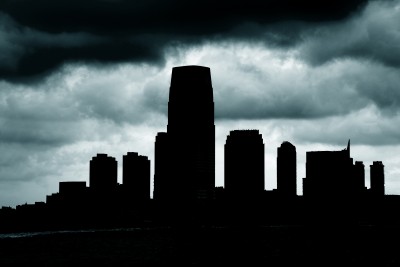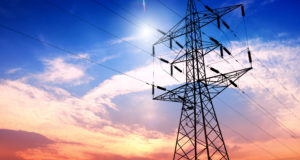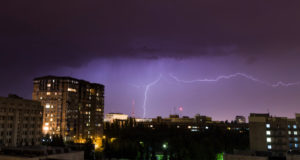What would you do if the world suddenly went dark?
That is exactly what NatGeo’s original movie American Blackout – which premieres Sunday, Oct. 27, seeks to discover. The power grid collapses following a cyber attack, forcing the nation into an immediate crisis. Although the man-made disaster lasts just 10 days, civil unrest, economic turmoil and a horrific amount of deaths still occur.
The National Geographic movie is extremely timely. As previously reported by Off The Grid News, the first ever nationwide power grid down drill will take place on Nov. 13-14.
American Blackout director Jonathan Rudd stated during a Q&A session for the media that a cyber attack was specifically chosen as the power grid disabler because such a scenario is no longer science fiction. As the Department of Homeland Security (DHS) reported earlier this year, the United States experienced a 68 percent increase in “cyber incidents” at federal agencies during 2012. The DHS also warned that a cyber activity increase in America appears to include Middle Eastern nations such as Iran.
Rudd also said:
“The research drove the narrative. This film is obviously a drama, but we were determined to be as informed as possible and we spent countless hours trying to get it right. We needed to know everything that would be affected in a 10-day nationwide blackout … and that turned out to be basically everything. Our team of researchers interviewed leading experts in various fields — cyber security, search and rescue, emergency medicine, sociology, engineering and more. We also sent experts the film script to have them weigh in, and we made changes based on their feedback.”
The official promo description for the movie reads: “After it becomes clear that the blackout isn’t isolated to a small region, curiosity may turn to concern for the entire country. Electronic communication will become increasingly difficult, as most backup power systems are only capable of maintaining normal operations for short durations.”
Off The Grid News received an early copy of American Blackout to review. The movie was shot from a first-person user-generated point of view. It follows several families or groups as they deal with the power grid down scenario. Viewers may not be introduced to the character’s entire backstory, but quickly begin to feel that they not only “know” but can identify with the folks on the TV screen.
Harness the power of the sun when the power goes out…
Jonathan Rudd utilized crowdsourcing and “Blair Witch”-style filming to tell this story.
“As viewers, we are watching more and more material online, and consequently becoming increasingly fluent in the visual language of user-generated film,” he said. “Because user-generated footage is shot by regular people, a more immediate connection can be drawn between the viewer and the event depicted. Our hope is that this very personalized form of reporting will allow us to immerse our audience in an intimate representation of how American people survived this event.”
The movie showcases a variety of characters, from all walks of life, areas of the country, and ages. It shows the dilemmas people who have food will be in when they encounter hungry neighbors and citizens.
Travis Fox, the award-winning producer of the Lights Out Saga, an upcoming independent feature-length film also about a downed power grid, weighed in on the moral dilemmas Americans will face during a disaster.
“I began delving into the morality and shades of gray that exist during a disaster,” Fox said. “People generally aren’t ‘good’ or ‘bad.’ Good people will fight for or steal food if their kids are starving. The storyline of Mark’s brother [main character in Lights Out Saga] was a good example. Mark got mad that his brother took food from empty houses, but he had done very similar things in order to survive himself. The ‘good’ families turned away at the gate of their stronghold are another example of morally difficult situations. I think the key is keeping your capabilities discreet, your resources discreet, and your weaknesses discreet – and help people in need as best you can. I think as self-reliant people we have that moral obligation. But on the other hand, our families will always come first.”
The NatGeo cyber attack movie also includes a small group of college kids essentially trapped inside their urban dorm. The 20-somethings’ most advanced piece of survival gear is a fairly dirty bucket left lying around by maintenance staff. Fortunately for the coeds, it rains just barely enough during the power grid failure that they do not become dehydrated. One of the more industrious college students uses a plastic milk crate to craft a pigeon trap in order to garner some food. The scenes at the dormitory should serve as a teachable moment for parents of adult children away at school.
Dorm rooms do not have much storage space, but basic survival gear and some long-term storage food could mean the difference between life and death. Velcro a cushion on top of the food buckets, and they can serve as extra seating during late-night study sessions. A cache of food and water hidden somewhere near the dorm room could also help your scholar to survive.
Those of us who are dedicated to living a more self-reliant lifestyle will likely shake our heads and utter some unflattering phrases when we watch some of the folks attempt to provide even the most basic of necessities for themselves during the movie. Our disgust will not be at sloppy or unrealistic writing, quite to the contrary; it will be at the realistic portrayal of the ignorance of those living a blissfully unaware existence before it is too late. A character living in a NYC penthouse learns the hard way about the dangers of attempting to open one of their only cans of food with a massive butcher knife after the power grid goes down.
One of the most heartstring-tugging parts of the NatGeo movie was when a little girl is seen sadly waving good-bye to her father and saying in an adorable voice, “Bye-bye daddy … daddy when are you coming back … daddy?” Imagine the little boy at the end of Shane, add some pigtails and tear-stained cheeks and the scene is set. You just know that the worried man walking down the street desperately searching for food and water may never have the opportunity to hug his little girl again. The family uses candles for light, leaving them on throughout the night while daddy is away. It is not difficult to determine what will happen to the home and the mother, little girl, and newborn, as the flames wave near curtains as they fold their hands above their aching bellies and pray for daddy’s safe return.
During the American Blackout movie, a black screen occasionally appears and cites intriguing statistics about the consumption of government or commercial utility provided “necessities” and preparedness facts. Fires occur in cities, suburbs and rural areas in the days following the downed power grid. Firefighters roll all the engines they can on the precious fuel they have left, but water pressure and tank refilling problems cause the blazes to rage out of control.
One fact screen stated that 35,000 gallons of water are necessary to combat the average house fire. When I questioned a few local firefighters about the statistic, they said the figure was about right, but probably a low estimate for structures in a rural area. Fire departments serving remote areas have to travel further to reach the emergency, allowing the fire to grow and require more water to fight. Two-story homes, big old farmhouses, and adjacent barns and storage buildings pose additional fire hazards.
When asked what he hoped the audience would take away from American Blackout, director Rudd said:
“That a sensible amount of preparation is advisable over keeping two cans of tuna in the kitchen. America is defined by its spirit of resilience and this film affirms that; even in the deepest of crises, people can pull through. I am currently on the lookout for a set of large barrels for water storage and a wind-up radio, while our drama producer has already hosted a neighborhood meeting and is stockpiling bottled water.
Research for American Blackout included working with leading experts in the cyber security, emergency medicine, search and rescue, engineering and sociology fields. Additional preparedness related experts were sent copies of the script for their input and some changes made based upon their recommendations. Power blackouts which have occurred in San Diego and New York City, as well as following Hurricane Sandy, were also used to help craft the film and develop realistic disaster scenarios and government response.
In the NatGeo film, the United States is so crippled by the downed power grid that the United Nations is called in to help – a scenario many Americans would probably like to avoid. The disaster movie does show President Obama several times, as updates are given to the masses about the nature and likely duration of the blackout, but the film is not at all political in nature. The fact that the most amazing country ever formed lacked the resources necessary to initiate its own recovery and is left to the mercy of foreign nations, should serve as a stark warning about our country’s vulnerabilities.
American Blackout premiers on the National Geographic channel on October 27.
 Off The Grid News Better Ideas For Off The Grid Living
Off The Grid News Better Ideas For Off The Grid Living





